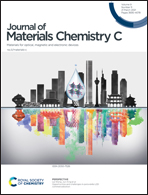Recent advances in 2D black phosphorus based materials for gas sensing applications
Abstract
In the last decade, black phosphorous (BP) has attracted the attention of researchers as a potential sensing material due to its exceptional physicochemical properties. This review provides a concise report on the recent trends in gas sensing applications of two-dimensional black phosphorous (2D BP). The review begins with the important properties of BP and then discusses synthesis methods of BP. Furthermore, an overview of the significant achievements in the gas sensing of BP for reducing and oxidizing gases is presented with a focus on both theoretical and practical findings. Most of the gas sensing studies of BP are simulation-based due to the unstable nature of black phosphorous. Therefore, the review presents both the theoretical and practical aspects of the BP-based gas sensors. As pristine BP suffers from some intrinsic limitations such as environmental instability and poor solubility, optimized tuning of the properties which are highly required to obtain a stable sensing device needs to be carried out. Therefore, the suceeding part of the review highlights some of the methods accepted for tuning the BP properties for achieving a stable gas sensing device. Finally, this review article discusses the future directions in the research of BP based materials for gas sensing applications.

- This article is part of the themed collection: Journal of Materials Chemistry C Recent Review Articles


 Please wait while we load your content...
Please wait while we load your content...